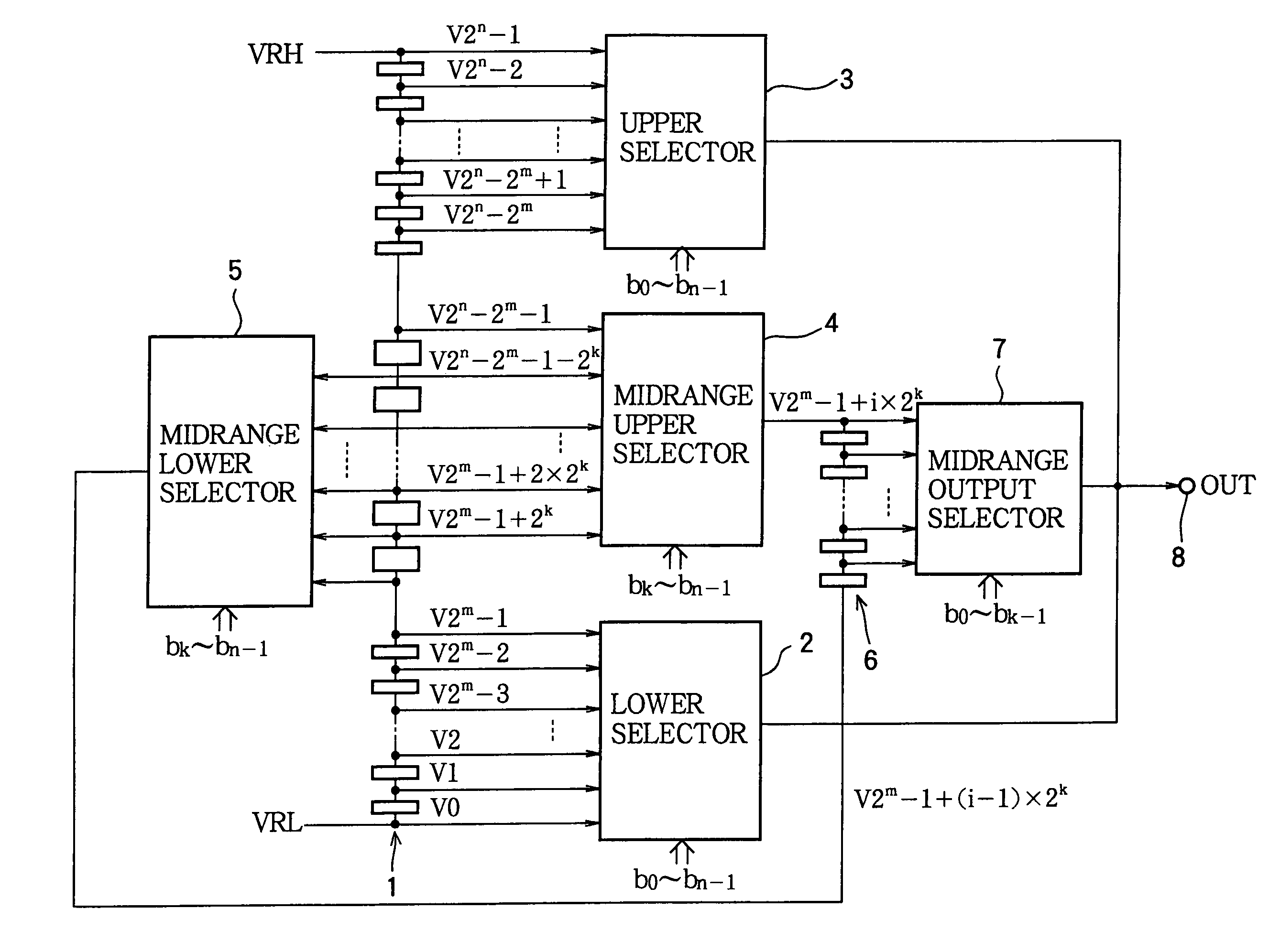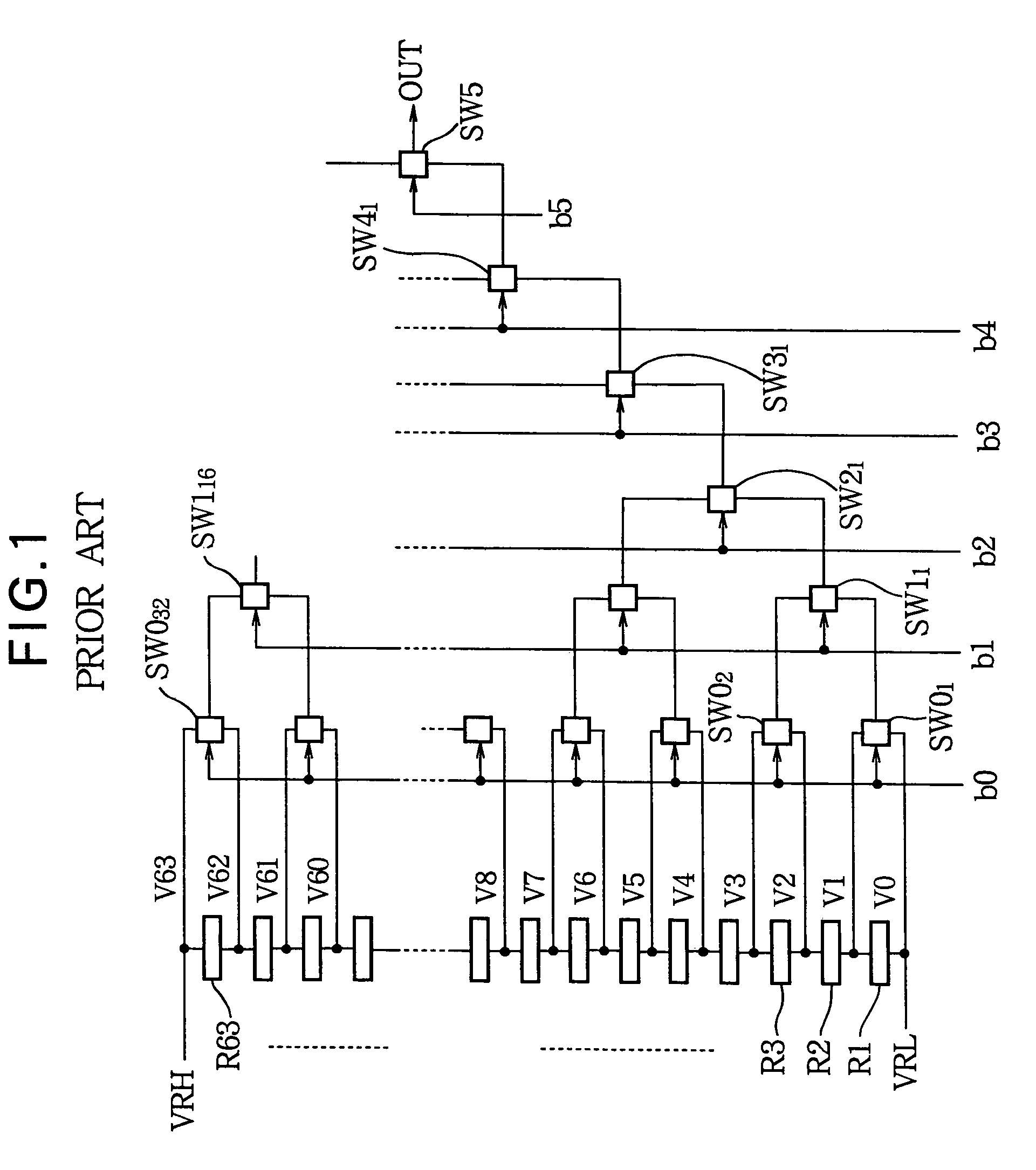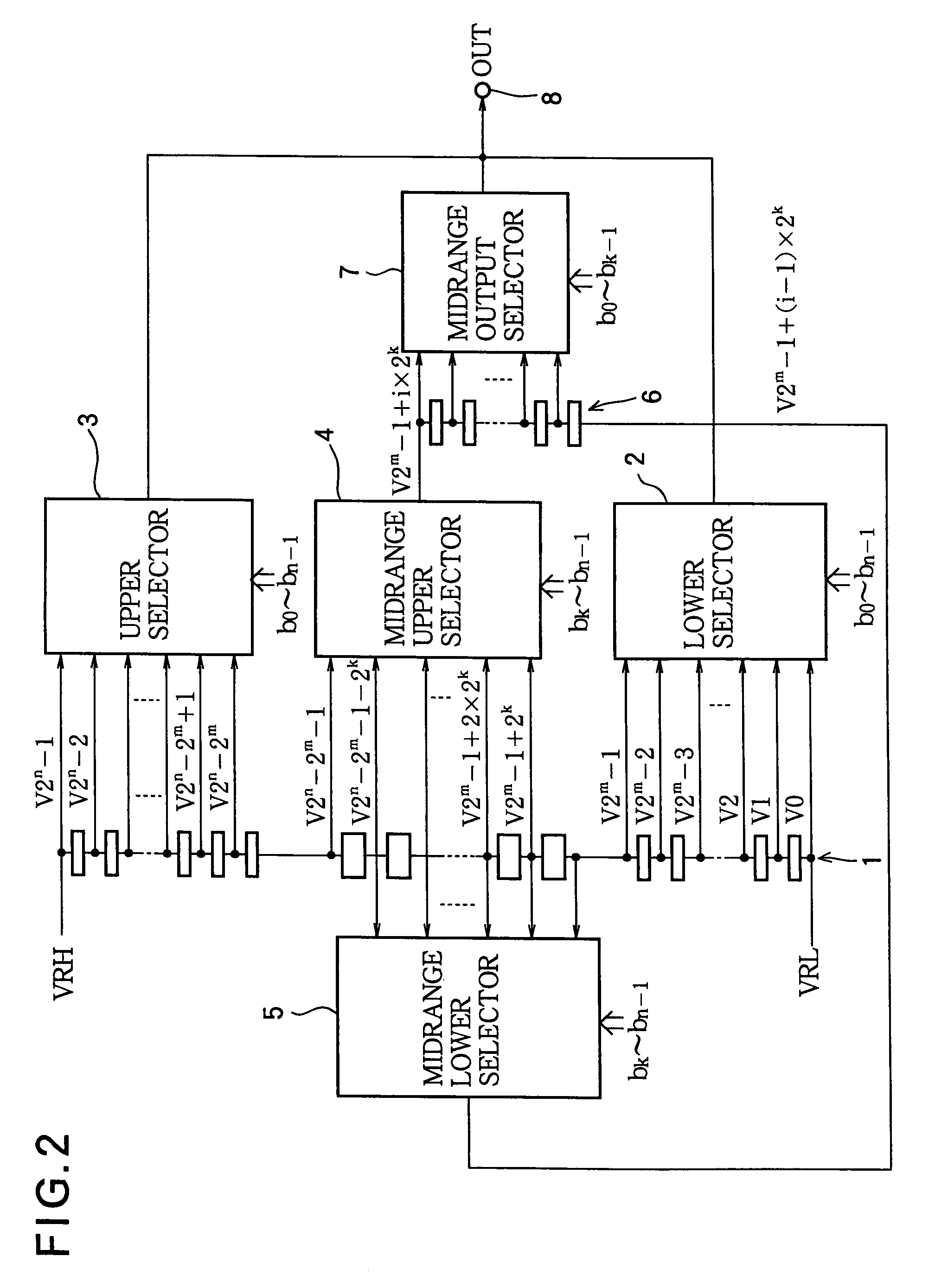Digital-to-analog converter
a digital converter and analog technology, applied in the field of digital-to-analog converters, can solve the problems of large number of signal lines, significant distortion of output voltage, and increase in resistor string number and the number of switches needed to select the divided voltage, so as to reduce parasitic loads and improve accuracy
- Summary
- Abstract
- Description
- Claims
- Application Information
AI Technical Summary
Benefits of technology
Problems solved by technology
Method used
Image
Examples
Embodiment Construction
[0025]A DAC embodying the present invention will now be described with reference to the attached drawings, in which like elements are indicated by like reference characters. For simplicity, parentheses are omitted in the drawing: for example, V(2n−1) is shown in the drawings as V2n−1.
[0026]Referring to FIG. 2, the DAC converts an n-bit digital input signal taking values from 0 to 2n−1 to an analog output voltage taking values from VRL to VRH. The parameter n is a positive integer, and VRH and VRL are externally supplied analog reference voltages. The analog output voltage, also referred to below as a driving voltage or gray scale voltage, can be used to drive a picture element in a display device. The DAC comprises a resistor string 1 consisting of a plurality of resistors connected in series between the lower reference voltage VRL and the upper reference voltage VRH to function as a voltage divider; a lower selector 2, an upper selector 3, a midrange upper selector 4, and a midrang...
PUM
 Login to View More
Login to View More Abstract
Description
Claims
Application Information
 Login to View More
Login to View More - R&D
- Intellectual Property
- Life Sciences
- Materials
- Tech Scout
- Unparalleled Data Quality
- Higher Quality Content
- 60% Fewer Hallucinations
Browse by: Latest US Patents, China's latest patents, Technical Efficacy Thesaurus, Application Domain, Technology Topic, Popular Technical Reports.
© 2025 PatSnap. All rights reserved.Legal|Privacy policy|Modern Slavery Act Transparency Statement|Sitemap|About US| Contact US: help@patsnap.com



